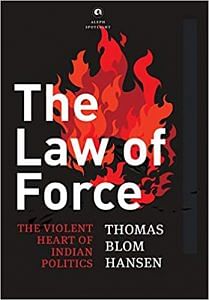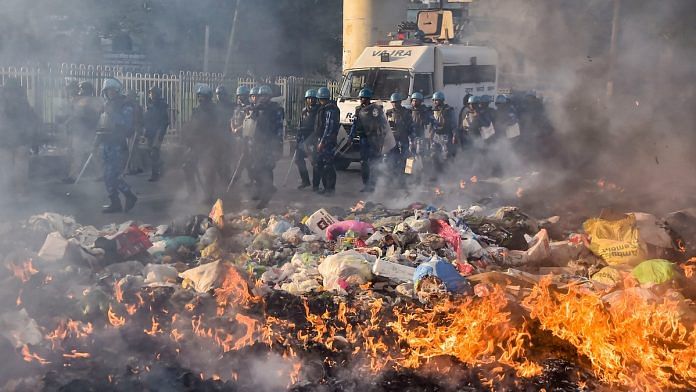Violence has, I propose, become a form of ‘general equivalent’ in India’s multiple publics, akin to Marx’s notion of commodities, prices, and money as the general measures of value of otherwise disparate objects (objects, labour, commodities, capital, debt, etc.). With Marx, we can think of equivalence as a form of translation and conversion mechanism, a mechanism whereby otherwise unintelligible and disparate objects, or events, appear intelligible because they can be apprehended through similar measures. Acts of public violence generate wildly disparate experiences and interpretations—avenging, retributive, sacrificial, or victimizing, etc. Often, the experiences of violence are entirely incommensurate with one another, as in the reckoning after major communal riots and other crowd violence where the perspective of the perpetrator, the bystander, and the victim are almost incommensurable.
At other times, violence is invisible and incomprehensible to an adjacent public and social world, as in routinized atrocities against Dalits, or the systematic, structural violence visited upon Muslims across the country. Yet, and here is the point, these experiences and real events can be presented, and performed, as public violence—that is transgressing a tacit or explicit norm as extralegal, excessive, and exceptional. This enables them to become visible and intelligible across otherwise deeply segmented, and antagonistic, public worlds.
While the thick social context and experiences of violence are difficult to translate, the figures of bereaved and violated victims, of angry and outraged crowds, or of the self-sacrificing activist facing senseless violence, the brutal police action against a crowd—these can transcend deeply segregated and segmented social and cultural worlds because they all bear the mark of an excess. In democracies such as India where there is at least a rhetorical commitment to a measure of civility in public life, public violence is neither a particular physical act, nor a routine social form. It is a moral transgression, however justified by anger or duty, that can be translated, generalized, and justified beyond the specific context and motives that drove it. Therein lies its monstrous and almost irresistible political force.
Also read: Political violence increases when regional party candidate wins election: Study
Thinkers of modern democracy like Hannah Arendt, Habermas, and many others see violence as the limit, if not negation, of political life and civil political discourse. However, it is clear that violence has become a completely routinized and integral part of the political life in India’s many diverse publics. Violence is a form of ultimate action that demands attention, a form of experience that generates reaction. It is one of the most powerful forms of communication and a repertoire of public performance that has become deeply intertwined with the more formal, mediated, and institutional aspects of India’s modern publics such as newspapers, news channels, and social media.
As Francis Cody has shown in compelling detail, newspaper reporting and op-eds in the Tamil press always factor in the possibility of violent reprisals in the wake of controversial statements. Similarly, Saamana and other right-wing newspapers are explicit about their reporting bias (or ‘truth’, as its reporters insist), and they routinely taunt its readers to take ‘direct action’ against their enemies. In actual practice in contemporary India, the street and the editorial office are not categorically different, one civil and objective, the other partisan, violent and rogue, but rather parts of the same vernacular publics where the public performance of anger and fury is every bit as legitimate as a sarcastic op-ed.
In contemporary India and much of South Asia, violence is no longer politics by other means. It is political life itself, by all means. This, I submit, is a deeper and long-term process that must be factored into our understanding of how Indian democracy actually works.
 This excerpt from Thomas Blom Hansen’s ‘The Law of Force: The Violent Heart Of Indian Politics’ has been published with permission from Aleph.
This excerpt from Thomas Blom Hansen’s ‘The Law of Force: The Violent Heart Of Indian Politics’ has been published with permission from Aleph.



